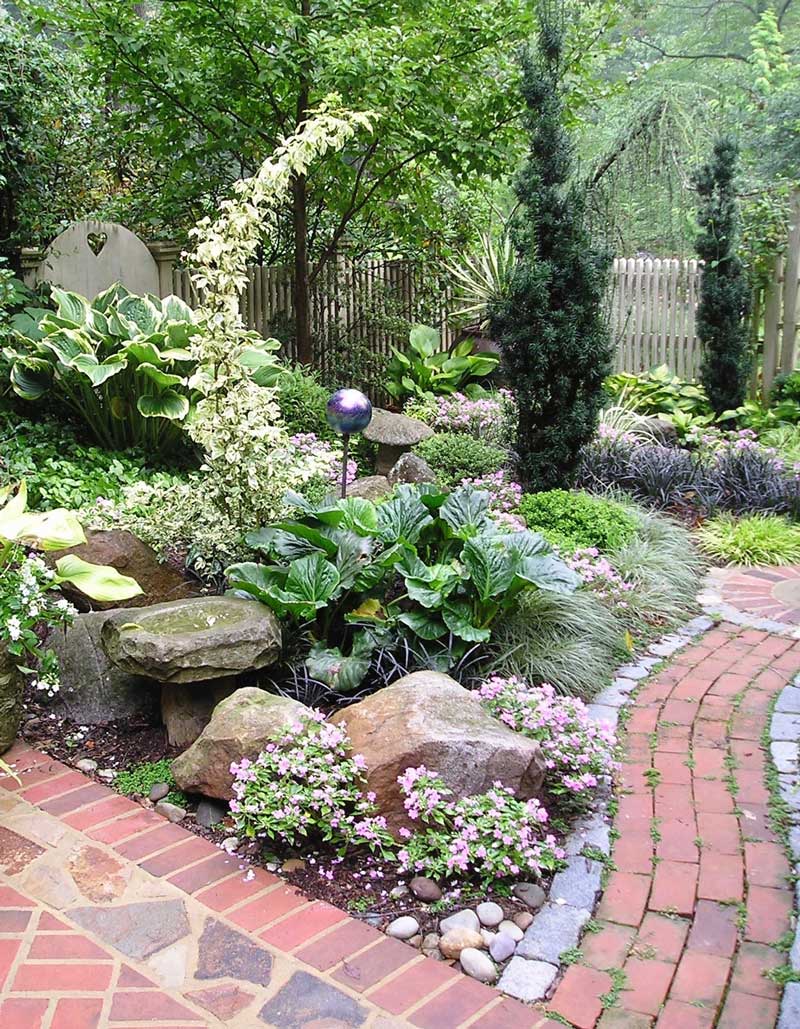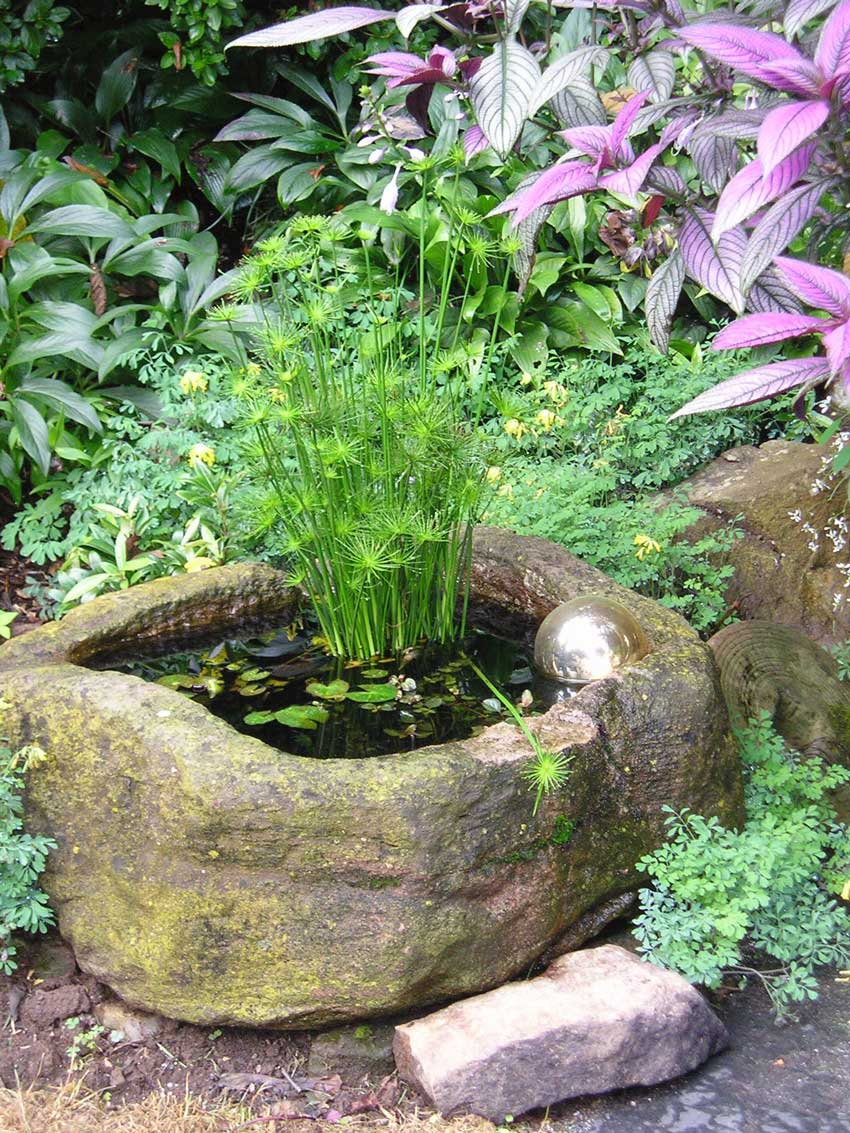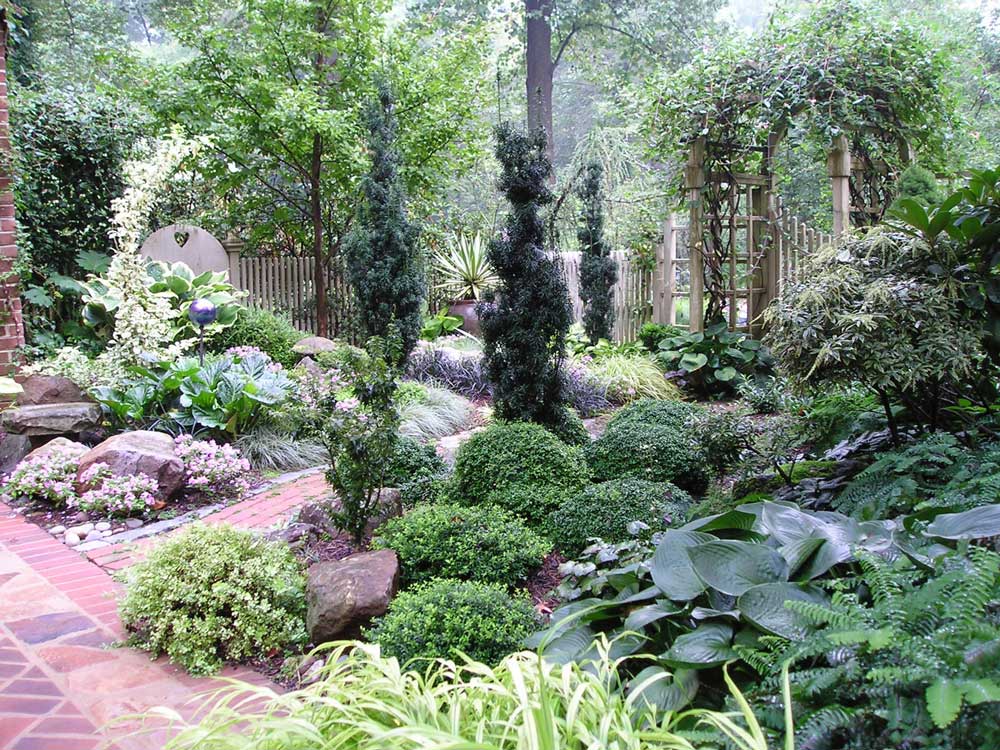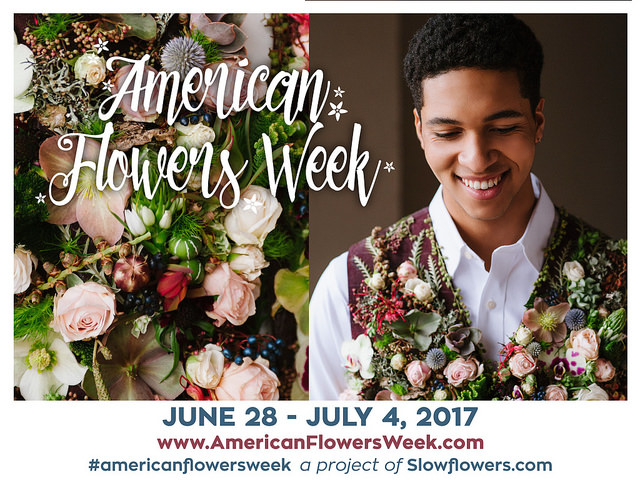7 Design Tips for Shady Gardens
Some gardeners never spend a minute thinking about design. Others (like me) can spend a year finding the perfect spot for a rock. The person who created the garden shown above, definitely thought a lot about design. If you have a shady place in your yard, you can steal some great ideas from this little jewelbox of a garden.
Foliage color. Shade gardens are always more about foliage than flowers. Notice how many different leaf colors have been chosen to create contrast, including blue-black, burgundy, grey and cream.
Foliage texture. In filtered light, it’s much easier to see variations in surface textures. This area includes smooth and glossy leaves that reflect light, as well as fuzzy and dull ones that absorb it. There’s also a wide range of leaf sizes, from boxwoods to giant hostas.
Shapes. Though the space is small, there are many different shapes to keep our eyes engaged. Strong verticals are balanced by mounding forms and bands of flowing grasses. There are vase shaped hostas and ferns, and a spiky cordyline. The gate and arbor add curves. Even the walkway incorporates interesting patterns.

Paths and edges. Shady spaces invite us to slow down and what’s underfoot becomes more important. The patterns, colors and lines in this beautiful brick pathway guide the journey and also set the mood. Sharp edges frame each bed and accentuate the softness of the plants inside.
Color accents. In a garden that’s primarily green, bright colors have much more impact and need to be used judiciously. There are only two colors here that aren’t foliage: pale pink impatiens and a purple gazing ball. Adding a lot more color would distract from the more subtle interplay of greens.
Water. The sparkle of water makes shady gardens come alive. The urn in the back corner is a fountain, with water spilling silently over the rim. That tiny bit of movement caught the light and added another layer of interest. It doesn’t require much water to add an element of magic.

A place to rest. It’s been many years since I visited this garden and I can’t remember if there was a bench. Considering the thoughtfulness of the design I’m guessing there was. Shady areas like this are naturally quiet and reflective. Offering a place to sit and have a think is an integral part of the experience.
For more inspiration about shade gardening, take a look at our selection of shade-loving perennials and shade-loving summer bulbs. And don’t forget about fall planted, spring-blooming bulbs. Good candidates for shady areas include iris reticulata, snowdrops, leucojum, fritillaria, daffodils and tulips.
Learn more here: Choosing Plants for Sun or Shade, Spring Bulbs for Shady Gardens.


